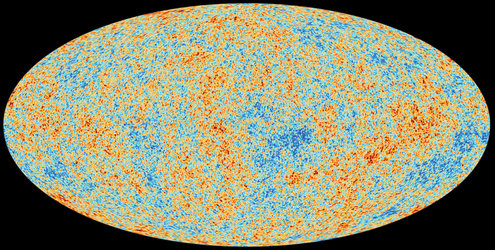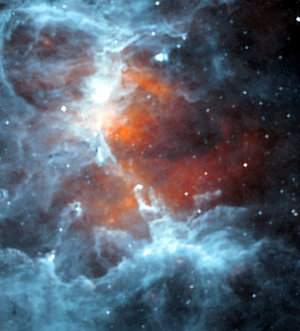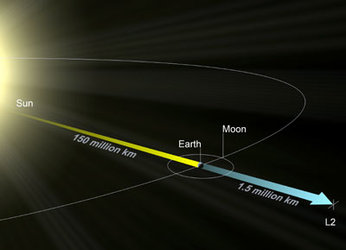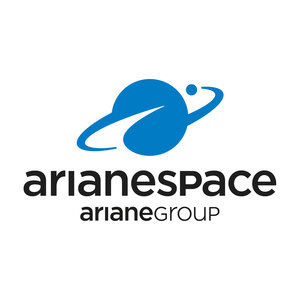Planck instruments integrated – a leap towards launch
Earlier this month, ESA's Planck has reached an important milestone in its development. The 'focal plane units' of the two instruments to be flown on the spacecraft were integrated into a single assembly by Alcatel Alenia Space’s premises in Cannes, France.
To achieve its mission objectives – mapping the Cosmic Microwave background at the widest frequency range ever, to study the fossil radiation from the Big Bang - Planck will fly two instruments: the High Frequency Instrument (HFI) and the Low Frequency Instrument (LFI).

Once in orbit, the Planck telescope will collect microwave radiation and will focus it onto the instruments' detector arrays in the two focal plane units. These units have just been integrated into a single assembly during a delicate procedure performed by Alcatel Alenia Space engineers on 20 November 2006.
The surgeon-like, 4-hour long operation consisted of making HFI 'descend' into LFI in such a way to prevent any contact between the two instruments. Following the successful integration, the combined HFI and LFI unit is now ready to be mated and aligned with the Planck telescope, which is already available for integration on the Planck spacecraft.
Note to editors
The High Frequency Instrument (HFI) was designed and built by a Consortium of scientists and Institutes from France, the United Kingdom, Canada, Germany, the United States, Ireland, The Netherlands, Denmark, Switzerland, Spain and Italy. The Consortium is led by Jean-Loup Puget (Principal Investigator) of the Institut d'Astrophysique Spatiale in Orsay (France), and Francois Bouchet (deputy Principal Investigator) of the Institut d'Astrophysique de Paris.
The Low Frequency Instrument (LFI) was designed and built by a Consortium of scientists and Institutes from Sweden, Denmark, Spain, Italy, the United States, Germany, Finland, the United Kingdom, The Netherlands, Switzerland and Norway. The Consortium is led by Reno Mandolesi (Principal Investigator) of the Istituto Fisica Spaziale e Fisica Cosmica (IASF) in Bologna (Italy).
Several funding agencies contributed to the instruments hardware: CNES (F), ASI (I), NASA (USA), PPARC (UK), Tekes (FIN), Spain, and ESA.
For more information
Thomas Passvogel, ESA Herchel/Planck Project Manager
Email: thomas.passvogel @ esa.int
Jan Tauber, ESA Planck Project Scientist
Email: jan.tauber @ esa.int















 Germany
Germany
 Austria
Austria
 Belgium
Belgium
 Denmark
Denmark
 Spain
Spain
 Estonia
Estonia
 Finland
Finland
 France
France
 Greece
Greece
 Hungary
Hungary
 Ireland
Ireland
 Italy
Italy
 Luxembourg
Luxembourg
 Norway
Norway
 The Netherlands
The Netherlands
 Poland
Poland
 Portugal
Portugal
 Czechia
Czechia
 Romania
Romania
 United Kingdom
United Kingdom
 Slovenia
Slovenia
 Sweden
Sweden
 Switzerland
Switzerland











































